
How to prune everbearing raspberries
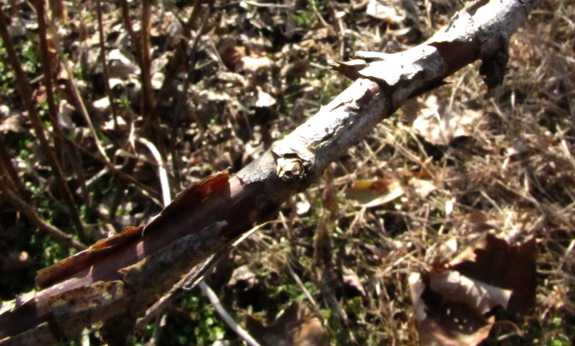
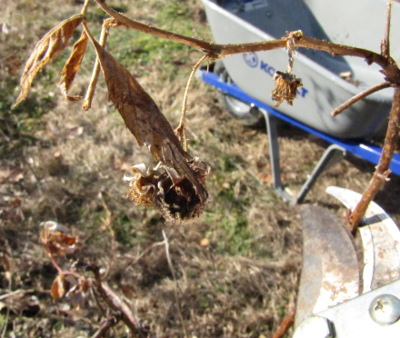 We
like to prune our everbearing
raspberries so that they produce both a summer and a fall crop,
which is a bit trickier than the conventional method of mowing the
plants all the way down in the winter and getting one big fall
crop. If you're looking for a double harvest, you still prune in
the winter, but have to be a bit more specific about what you cut off.
We
like to prune our everbearing
raspberries so that they produce both a summer and a fall crop,
which is a bit trickier than the conventional method of mowing the
plants all the way down in the winter and getting one big fall
crop. If you're looking for a double harvest, you still prune in
the winter, but have to be a bit more specific about what you cut off.
The first step is to
remove all of the dead canes. These are the canes that fruited
last spring, and they're pretty easy to pick out since they've turned
brown and their bark is peeling, like the cane in the 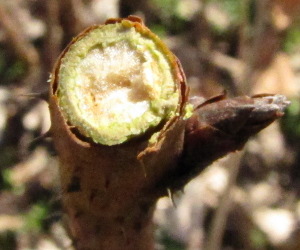 first
photo.
first
photo.
Next, you want to cut
the tops off the canes that fruited in the fall. Most people
admonish you to cut off the top third, but the truth is that you're
cutting off the dead part. After snipping off a few tops, you'll
start getting an eye for guessing the point at which the plump, live
cane turns into the more shriveled, dead cane. To check your
work, look down at the cut end --- you should see a thin ring of green,
showing that you've cut all the way down to the living tissue.
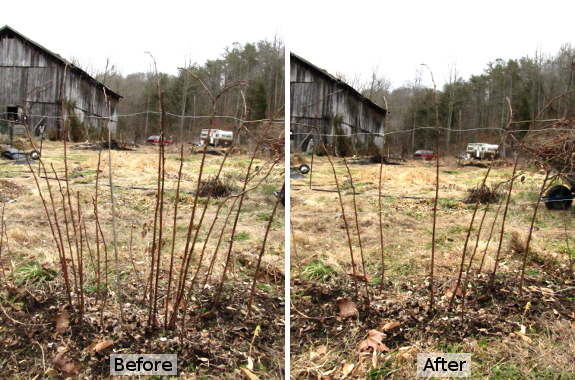
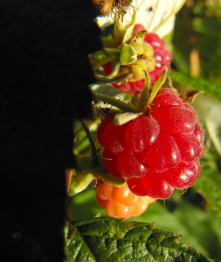 If you wanted, you could stop
pruning here, but thinning out some of the living canes will give you
bigger, healthier berries in the spring. The rule of thumb is to
leave four or five of the thickest canes per linear foot of row.
The photo above is a before and after shot of this last step in pruning
our raspberry patch.
If you wanted, you could stop
pruning here, but thinning out some of the living canes will give you
bigger, healthier berries in the spring. The rule of thumb is to
leave four or five of the thickest canes per linear foot of row.
The photo above is a before and after shot of this last step in pruning
our raspberry patch.
Now throw down some
compost and a thick layer of mulch and wait for the sweet, juicy
berries in June!
Want more in-depth information? Browse through our books.
Or explore more posts by date or by subject.
About us: Anna Hess and Mark Hamilton spent over a decade living self-sufficiently in the mountains of Virginia before moving north to start over from scratch in the foothills of Ohio. They've experimented with permaculture, no-till gardening, trailersteading, home-based microbusinesses and much more, writing about their adventures in both blogs and books.
Want to be notified when new comments are posted on this page? Click on the RSS button after you add a comment to subscribe to the comment feed, or simply check the box beside "email replies to me" while writing your comment.
